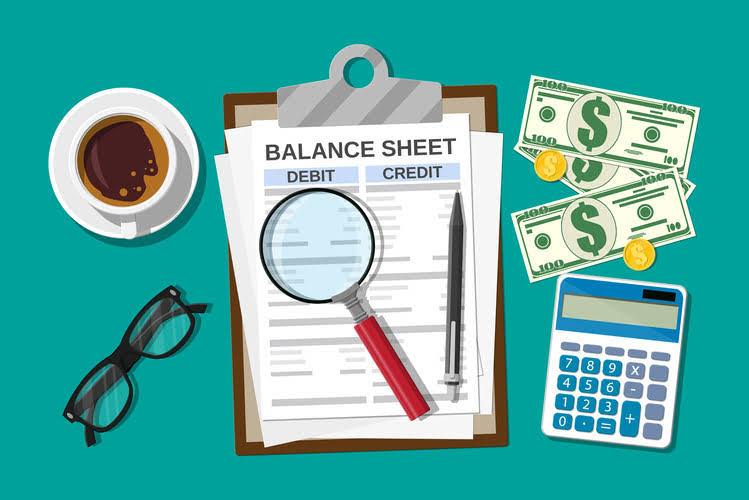
Encumbrance accounting plays a vital role in financial management, providing organizations with the tools to effectively manage their budgets, track financial obligations, and make informed decisions. By creating encumbrances, organizations can set aside funds for specific expenses, allowing for better planning, control, and accountability. Overall, encumbrance accounting serves as a crucial tool for effective budget management, accurate financial reporting, informed decision making, and maintaining financial control and accountability.
Purpose of Encumbrance Accounting
An entry is made in the journal with a debit to the encumbrance account and transferred to the general ledger. The definition of an encumbrance is not the same as used in the real estate profession, where it means mortgages, property liens, and easements. Carry Forward rules 2 and 3 can be combined if you want to carry forward budget amounts equal to encumbrances plus funds available.
Can encumbrances be modified or canceled?
This ensures that these funds are earmarked for their intended purpose only, preventing them from being allocated elsewhere. However, in the accounting ledger, the entire £500,000 is recorded as an encumbrance. Though it may be tempting to leave extra money in the general fund to pull from whenever something comes up, doing so could easily over-extend your budget encumbrance accounting and place serious constraints on your cash flow. The encumbrance is marketed in your organization’s accounts once you reserve the money. The first step encumbers newly entered purchase order line items into the General Ledger to help prevent overspending. Helping organizations spend smarter and more efficiently by automating purchasing and invoice processing.

To view funds available:
An encumbrance balance refers to restricted funds that have been set aside for known future expenses of a company. This helps improve transparency between departments and ensures every penny has been accounted for with a purchase. Encumbrance also enables you to take control of your finances and prevent fraud from occurring.
- Understanding the process of recording encumbrances and the benefits it offers can help businesses make informed decisions and ensure financial stability.
- A downside of encumbrances is that they increase the complexity of government accounting to some extent.
- Each type of encumbrance is meant to protect parties and specify exactly what each claim entails.
- Carry Forward rules 2 and 3 can be combined if you want to carry forward budget amounts equal to encumbrances plus funds available.
- One of the key benefits of encumbrance accounting is enhanced financial management.
- This proactive approach allows resources to be managed more effectively and avoids the cash being spent before it is needed.
- So, embrace encumbrance accounting as a powerful tool in your financial management arsenal, and harness its benefits to drive your organization towards greater financial stability and success.
- Any encumbrance funds are not part of the actual funds ledger balance, because payments haven’t been processed.
- Its multifaceted uses contribute to responsible financial management and informed decision-making.
- Or pedestrians might have the right to use a footpath passing through that property.
- Vital analysis, reports, and audits are based on the cash outflow and journal entries tracked by accounting, making accurate tracking much more than a simple general planning tool.
- Once you pay that supplier’s invoice, you will remove that money from within the encumbrance balance.
Despite these limitations, https://www.bookstime.com/ continues to be widely used as an effective tool for budget management, financial planning, and expenditure control. Encumbrance accounting is an essential element in providing accurate financial information and maintaining transparency in an organization’s financial operations. It allows businesses and institutions to plan and monitor their spending, ensuring that the allocated funds are used appropriately and in accordance with the budget. The encumbrance accounting entry is done for funds set aside for future expenses that are liable to be paid. These expenses have not been billed yet, but money has been set aside from the company’s budgets. The accounting term encumbrance can sometimes be mistaken for real estate encumbrance.
Phase 3: Expenditure (Realization)
By utilizing encumbrance accounting practices, organizations can optimize their financial resources, enhance transparency, and foster fiscal responsibility. One of the key benefits of encumbrance accounting is enhanced financial management. By reserving funds for future liabilities, such as payroll and taxes, organizations can ensure that they have the necessary funds available when needed. This allows for better expenditure control and prevents overspending, ultimately leading to improved financial stability.
- These expenses have not been billed yet, but money has been set aside from the company’s budgets.
- Or it may be a financial lien placed by someone owed money for work they did for the previous owner, that wasn’t paid.
- The encumbrance accounting entry is done for funds set aside for future expenses that are liable to be paid.
- The creditor can then sell the property to recoup at least a portion of their loan.
- Now that we understand how encumbrances are recorded and reported, let’s explore some practical examples to further illustrate the concept.
Now that we understand how encumbrances are recorded and reported, let’s explore some practical examples to further illustrate the concept. It is created on the general ledger upon finalization of purchase orders, recurring contracts or pre-encumbrance documents. Various governments have adopted encumbrance accounting, nonprofits and some companies to handle sensitive finances better.
